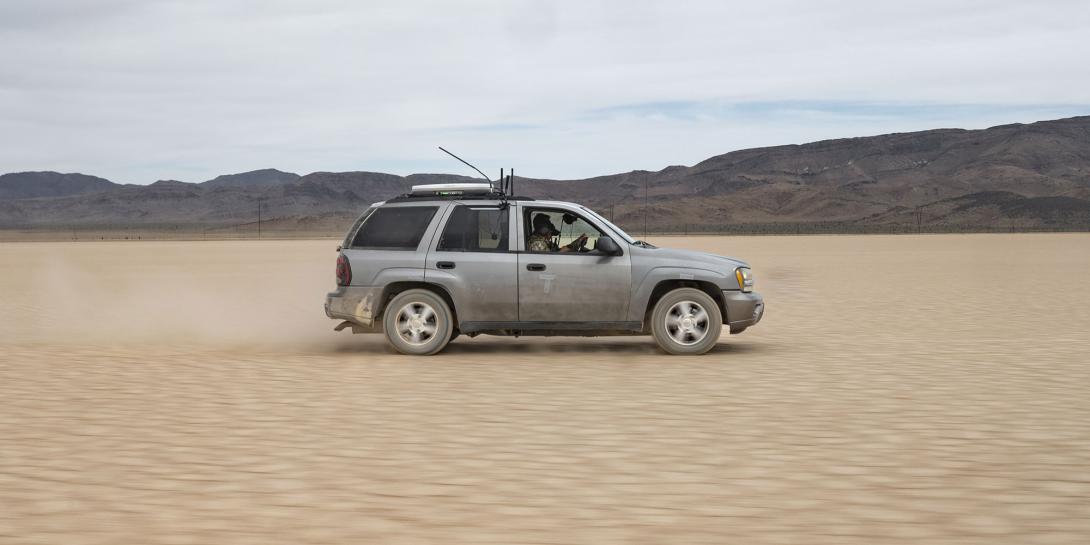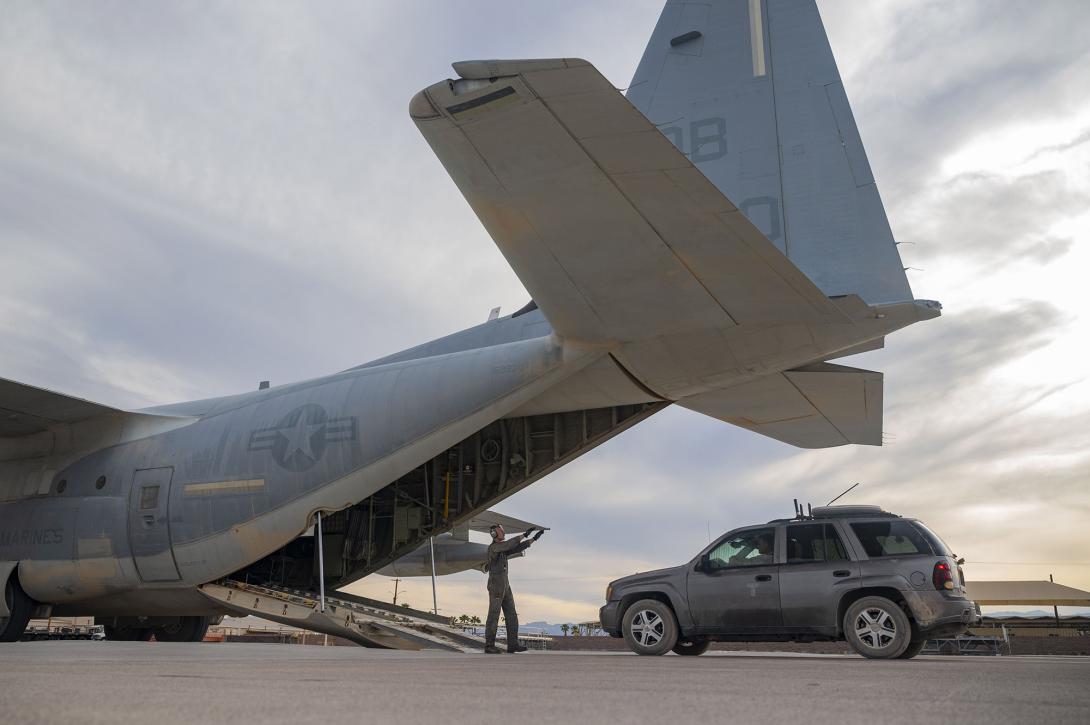Mobile C2 Gets Tactical
U.S. warfighters at Nellis Air Force Base, Nevada. recently achieved operation of true on-the-move command and control, or C2, capabilities during the Black Flag 22-1 exercise at the base’s Nevada Test and Training Range, reported Senior Airman Zachary Rufus, USAF, from the 57th Wing Public Affairs Office. Airmen from the 422nd Test and Evaluation Squadron, or TES, leveraged existing commercial and governmental components and integrated the technology into a commercial sport utility vehicle, or SUV, essentially creating the first-ever mobile tactical C2 vehicle, Rufus noted.
The SUV was paired with a U.S. Marine Corps KC-130 to test how flexible and rapid the mobile tactical C2 element could be, especially in application of Agile Combat Employment, or ACE, the Air Force’s leading concept of operating as a more lean, agile and lethal force that can generate airpower quickly across more dispersed locations. The test was completed at a dry lake bed on the base that replicate deployment and extraction from austere environments, the senior airman explained.
“Using technology available today, we were able to demonstrate how the Air Force can rapidly deploy tactical C2 to an austere environment, aggressively improve the sensor–to-shooter timeline, all while also being resilient against our potential adversaries through a meshed network infrastructure,” said Maj. Paden Allen, USAF, commander, 422 TES Tactical C2 Division. “By truly being mobile tactical C2, we now complicate the ability for an opposition force to degrade or destroy our ability to command and control forces.”
Traditionally, ground-based tactical C2 capabilities have been called “mobile” but are inherently stationary due to the difficulty in transporting the large form factor legacy C2 technology. For example, Rufus said, “a current Control and Reporting Center can take multiple C-17s or several 5-Ton trucks and transport equipment and personnel into the field to establish operational capability in 24-72 hours. During this movement, the equipment and airmen are extremely vulnerable to threats in the battlespace.”
During the exercise, the 422 TES airmen challenged themselves to find a way to perform their mission from a single vehicle while on the move and deployed in an agile combat employment scenario with little or no setup time, Rufus stated. They successfully executed two missions that demonstrated the ability to provide tactical C2 through accessing DoD computer networks, employing multiple tactical data links, and communicating with aircraft all while driving on the Nevada Test and Training Range.
“It’s not only possible but necessary that this capability comes online and it comes online quickly,” said Capt. Patrick Lauer, USMC, an exchange officer from the 729th Air Control Squadron, Hill Air Force Base, Utah, who was attached with the 422 TES during Black Flag.
“Large, slow-moving, or moveable at all, command and control agencies are now targets, and are quickly becoming less viable, especially against the future fight.”
The successful airlift with the Marines and their KC-130 demonstrated ACE operations with joint partners, another goal of the Air Force’s roll out of ACE.
“The fact that we did it inside of large force exercise proves we can be mobile and we can be an impact on a much larger scale,” said Tech. Sgt. Kayla Sisson, USAF, weapons director from the 729th Air Control Squadron, Hill Air Force Base, also attached with the 422 TES for exercise. “The table is set, we have the way forward and now we just have to work out the fine details.”
The 422 TES C2 division will continue their mobile C2 vehicle experiments during local missions as well as other large force exercises throughout the year, which will help the Air Force’s Air Combat Command leadership to understand the possibilities that come with modern technology and automation, Rufus said.
“This experiment went from conversations and a bar napkin drawing to providing tactical C2 from a moving 2007 Chevrolet Trailblazer and demonstrating joint ACE within about 3 weeks,” said Allen. “Thanks to the overwhelming support from a few industry partners, the Marines at Marine Air Wing-3, Joint Communications Support Element ,and multiple units across the U.S. Air Force Warfare Center located here at Nellis Air Force Base, we were able to demonstrate our concept and reduce the risk for our Air Force leaders while not spending any additional taxpayer money. We hope that our provided results to ACC can immediately inform how to scale our solution while leaving room for development, so that warfighters are employing with these capabilities within the next year.”
The base hosted the Black Flag 22-1 from May 9-13 with four of the services and the Royal Australian Air Force. One of the main objectives was to be able to automate long-range kill-chain capabilities. The U.S. officials also closely examined the Royal Australian Air Force’s E-7A airborne early warning aircraft, called the Wedgetail, that the U.S. Air Force recently selected as a replacement for the E-3.





Comments